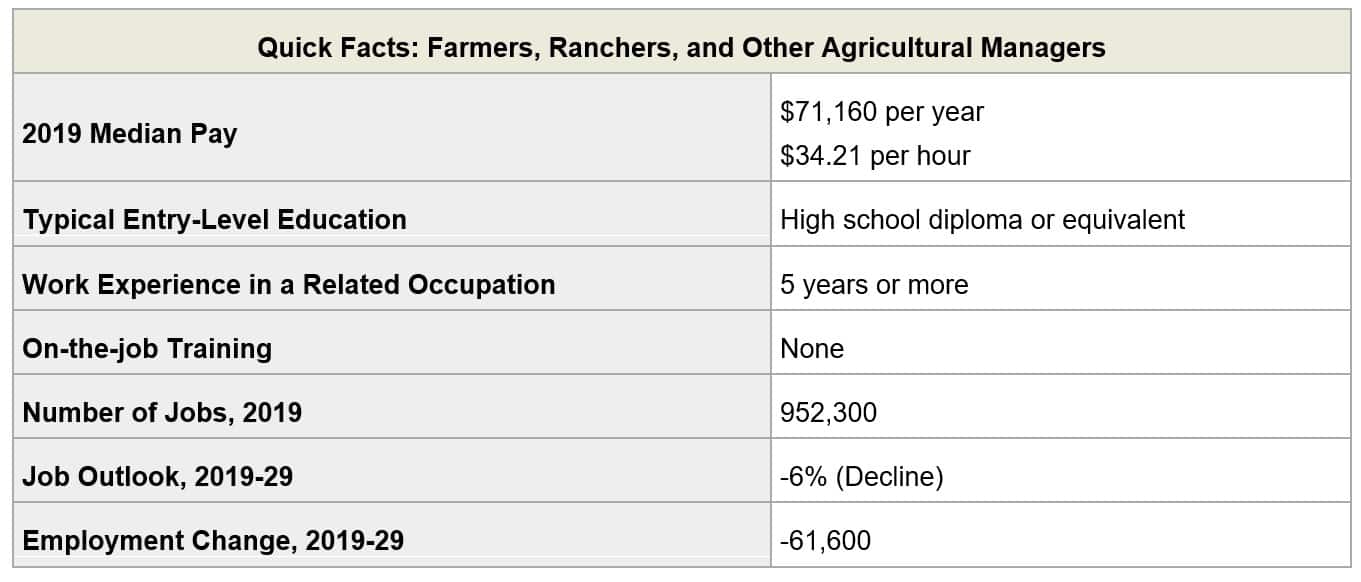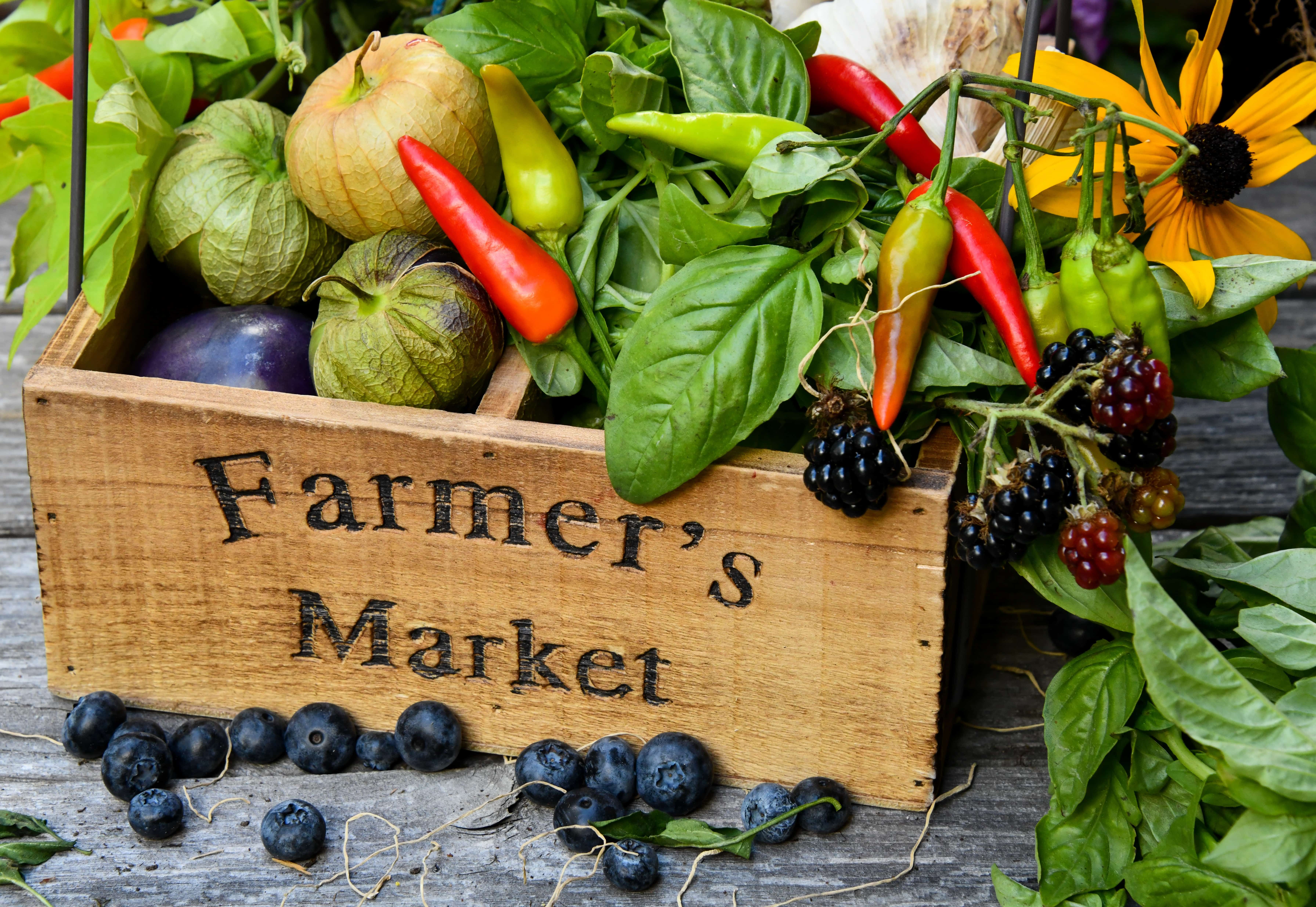Learn about trends in the Farmers Market industry and where to find more info about how to open your own Farmers Market. Don’t forget you can receive free or low-cost training and free professional business advice from your local Small Business Development Center!
View our related business reports here: Food Industry Research and Beverage Industry Research.
Get a free Farmers Market Business plan template on our Business Plans page.
Farmers Market COVID-19 Resources
In response to the global COVID-19 pandemic, shelter-in-place orders and physical distancing measures have affected many businesses. Here is a look at the impact to the farmers market industry.
There has been a confusing patchwork of regulations due to the impact of COVID-19, varying by state. Some states classified them as essential businesses to ensure food availability while others forced them to close to avoid large gatherings of people. Negative financial impacts to farmers markets are further compounded by lack of available assistance, as farmers market operators often aren’t eligible for federal relief efforts and programs set forth in 2020 to assist small businesses weather the storm. As states reopen, necessary adjustments such as social distancing, increasing access to hand sanitizing stations, cleaning high contact surfaces and other methods to reduce the risk of spread of the virus will likely be expected by patrons and vendors alike. Here are some additional COVID-19 business resources specific to this industry
- SBDCNet COVID-19 Small Business Resources
- Farmers Markets Respond to COVID-19 — Best Practices, Examples, and Resources
- COVID-19 Agricultural Business Resources
- BuyLocalFood – COVID-19 Resources
Farmers Market Business Overview & Trends
NAICS Code: 445230, SIC Code: 5431
Due to the independent nature of farmers markets, it can be difficult to get a grasp on total industry revenue. However, the a recent estimate determined that industry revenue for vendors was approximately $1.5 billion nationwide.
This Specialty Food Stores industry summary is from First Research which also sells a full version of this report.
- “Companies in this industry sell products such as meat, fish, fruits and vegetables, baked goods, candy, and gourmet foods from physical retail locations, often specializing in a single product category. No major companies dominate the industry.
- Sales of specialty foods have been increasing worldwide as demand for ethnic foods has continued to grow. In part, the increase comes from immigrant consumers seeking out foods from their own cultures. In the US, Hispanic consumers command about $1.4 trillion in buying power, a figure that’s expected to reach $1.8 trillion by 2021, according to Nielsen. Moreover, Hispanics spend more than other groups on groceries, according to the Selig Center for Economic Growth. Asian-American buying power in the US is about $986 billion and is expected to increase to $1.3 trillion by 2022. As consumers worldwide see higher wages and travel increases, interest in other ethnic cuisines such as Filipino, Pakistani, and Peruvian is expected to rise.”
- The US specialty food store industry includes about 22,300 establishments (single-location companies and units of multi-location companies) with combined annual revenue of about $22 billion.”
Additional information and resources about the Farmers Market industry:
- For every dollar spent at a vendor in a farmers market, 100% of your food dollar goes to the local farmers. At traditional food outlets such as supermarkets or grocery stores, that number can be as low as 15% after expenses.
- Farm Data about your State – USDA
- USDA – Farming and Farm Income
Fruit and Vegetable Market Customer Demographics
IBISWorld reports major customer segments for Fruit & Vegetable Markets in the US. Find full versions of the report available for purchase here. IBISWorld estimates total industry revenue in 2020 around $5.6 billion, segmented as follows:
- The largest market segment for fruit and vegetable markets is households, generating approximately 86.8% of industry revenue. Households are further differentiated by consumer age. The remaining 13.2% of total industry revenue comes from other businesses including those that resell products, along with food service and hospitality businesses.
- Children aged 17 and under (20.1%) consume a large amount fruits and vegetables due to learning and school events which focus on healthy eating. However, these fruits and vegetables are overwhelmingly purchased for them by their school or family rather than using their own money.
- Consumers between the ages of 18 and 44 comprise 22.8% of industry revenue. However, those with families may find that supermarkets are more convenient for them to purchase their fruits and vegetables from due to their limited time.
- Consumers between the ages of 45 and 64 comprise 27% of revenue. Their large industry segment is due to multiple factors, including potential dietary restrictions and health problems, and purchasing of fruits and vegetables to develop good habits for their children.
- Consumers above the age of 65 are the final 16.9% of industry revenue. Many older Americans have health issues or are watching their diets. This group will increase in size as boomers continue to age.
Find additional information on farmers market customers and fruit and vegetable consumers in a variety of trade associations and publications, including:
- 2018 State Indicator on Fruits and Vegetables – CDC (pdf)
- Farmers Market Shoppers Demographics Snapshot
- Who Shops at a Mature Farmers Market?
- Fruit and Vegetable Consumption of US Adults by Level of Variety
Farmers Market Startup Costs
According to an analysis by the Farmers Market Coalition, the startup costs for a farmers market vary based on the policies of the market and how much equipment that vendors are required to provide on their own. Some considerations FMC provides for farmers market startup costs:
- “Transportation and mileage costs
- Site location cost
- Water, electricity and other utilities
- Porta-potty rental, if restrooms are not available
- Canopies, tables and chairs, if they are not designated as the responsibility of the vendors
- Advertisement budget
- Cost for parking area and road lane closure fees
- Printing training materials for vendors
- Nutrition educational materials
- Food permit costs
- Electronic Benefits Transfer (EBT) machine for Sustainable Nutrition Assistance Program (SNAP), credit cards”
In your planning phase, you can determine the amount of equipment needed when writing up your agreement for potential vendors so that they can be aware of what they will need to bring and what is provided for them in exchange for the space rental cost.
Find additional farmers market startup costs information through the following resources:
- Starting a New Farmers Market (pdf)
- Farmers Market – Entrepreneur Business Idea Center
- How to Start in the Farmer’s Market Business – Chron
Farmers Market Business Plans
- Sample Farmers Market Business Plan Template
- Farmers Market Business Plan
- Foundations for a Successful Market
Farmers Market Associations
Trade associations often are excellent sources of information on an industry. Here are some relevant industry associations:
Farmers Market Regulations
The section provides a general awareness of regulations and agencies to consider when starting a farmers market business. Check with your state and municipality for rules and regulations that may impact the business in your area. Regulations tend to be more on the local level, but vendors may need to comply with federal labeling or food safety laws, especially for meat products
- Federal Policies & Programs – Farmers Market Coalition
- Food Safety Considerations for Farmers Markets – Purdue University (pdf)
- Regulations on Food Businesses – FDA
Farmers Market Publications
- Fruit & Vegetable Magazine
- Farm Journal
- Growing for Market
- Farmers Market Clean Eating Magazine
- American Farm Publications
Agriculture Employment Trends
The US the farmers market industry has grown rapidly, with 1,367 markets currently registered in the USDA National Farmers Market Directory. However, operators usually only have a few administrative employees who handle organizing, setups, rentals, and administrative work to allow the growers and sellers to do what they do best.
The Bureau of Labor Statistics collects occupation information on Farmers, Ranchers, and Other Agricultural Managers. Below is a summary of BLS data:

- “Pay: The median annual wage for farmers, ranchers, and other agricultural managers was $71,160 in May 2019. The median wage is the wage at which half the workers in an occupation earned more than that amount and half earned less. The lowest 10 percent earned less than $37,530, and the highest 10 percent earned more than $132,760. Incomes of farmers and ranchers vary from year to year because prices of farm products fluctuate with weather conditions and other factors.”
- “Work Environment: Farmers, ranchers, and other agricultural managers held about 952,300 jobs in 2019. Farmers, ranchers, and other agricultural managers typically work outdoors but also may spend time in an office. Their work is often physically demanding. Some farmers work primarily with crops and vegetables. Other farmers and ranchers handle livestock.”
- “Job Outlook: Employment of farmers, ranchers, and other agricultural managers is projected to decline 6 percent from 2019 to 2029. Over the past several decades, increased efficiencies in crop production have led to consolidation and fewer, but larger, farms. This means that fewer farmers are needed to produce the same agricultural output. In addition, as farms become larger they are able to invest more in productivity-enhancing technologies, reinforcing this effect. Despite steady demand for agricultural products, many small farms operate with slim profit margins and are vulnerable to poor market conditions. As in the past, operators of smaller farms will likely continue to exit the business over the next decade.”
Additional Small Business Resources
Already in business or thinking about starting your own small business? Check out our various small business resources:
- View more business reports here: Small Business Snapshots
- View small business help topics here: Small Business Information Center
- View industry-specific research here: Market Research Links
- View business plans samples here: Sample Business Plans
Remember, you can also receive free professional business advice and free or low-cost business training from your local Small Business Development Center!
Photo by Shelley Pauls on Unsplash






